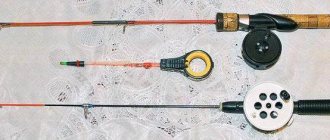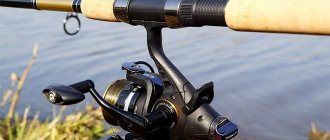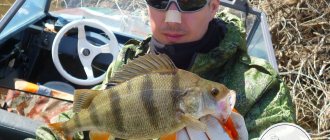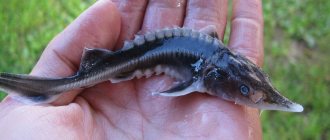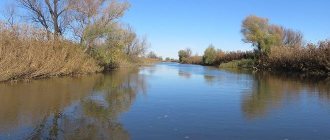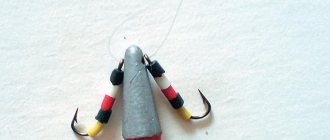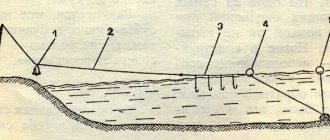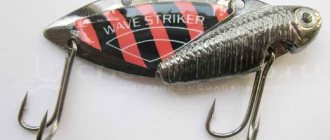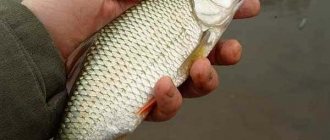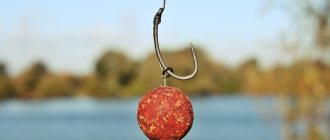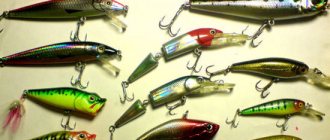Content
- Fishing with rings and eggs from a boat
- How to choose a fishing spot
- Sinker bait. Tackle element
- How to mount leashes
- Choosing hooks for catching bream
- Choosing a fishing rod for catching bream
- Bait for catching bream and ide
- Nozzle
This mega fishing gear was previously banned. It's clear why. Even poachers with nets can envy the catches of the “ring fish”. If you want to learn how to catch really big fish, read this article.
Fishing technique
After the boat is anchored, a feeder is lowered to the bottom. The cord or line is taut. The tackle is lowered along the cord of the feeder. To do this, the cord is wound between the balls of the load.
When immersing the fishing line, it is convenient to use the reverse motion of the reel. By counting the number of revolutions, it will be easier to accurately set the depth the next time you cast.
Fireflies are used for night fishing.
Depending on the rod, a bite will be signaled by the tip of the picker or the nod of the side rod. After hooking, the fish is taken to the side so that it does not scare away the others and does not tangle the fishing line. Fishing with fishing eggs is effective only in bodies of water with a current.
Fishing with rings and eggs from a boat
If you were to ask me what is the most catchy legal method of production I know, I would answer - “on the ring” , also known as “eggs” , also known as underpass . The essence of this method of fishing is simple. A large mesh feeder filled with aromatic bait lures and holds the fish, and several hooks coming from it, just in time, end up on the fish’s table. Simple and very effective. So much so that this tackle was banned for many years. But now there are a lot of bream and ide, nothing prevents you from enjoying stable fishing for large fish. One thing is true, you can easily become a poacher by exceeding the daily catch limit in just a couple of hours of successful fishing.
You can fish from a regular rubber boat, even without a motor. Finding bream sites is very easy for an experienced fisherman; this can be done even without an echo sounder. Usually these are deep holes, channel slopes with a clay bottom, where the current becomes somewhat quieter. Usually bream and ide are in huge schools, so if you set up your gear correctly and find such a cluster, you won’t go home without fish.
There are two main fishing techniques - with a ring sinker and with an egg sinker. The latest, improved method allows you to freely catch large specimens of fish, reducing gatherings. The point is that the wound ring weight constantly slides along the main line going to the feeder, and the eggs “unfasten” when fished out and give more freedom to fight.
Eggs are essentially two ball-weights fixed on a safety pin, the fishing line of the tackle itself slides through the eye, and a cord is passed between the weights, leading to the feeder.
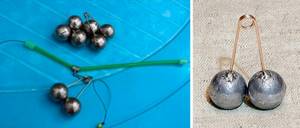
As a child, my grandfather was an avid spinning fisher; sometimes he could not stand the weak bite of a predator in the summer heat and went to the river to amuse himself with ring fishing. I remember the buckets full of bream and ide he brought home from every fishing trip. It’s a pity that the epidemic of opisthorchiasis in the Ob basin did not allow us to enjoy large, fatty and, probably, very tasty hot and cold smoked bream...
Design of tackle with a ring
For a fishing rod, you can either make egg tackle with your own hands or purchase it in a special store. This fishing rod allows you to catch big fish. To make gear you will need:
- Volume feeder.
- Lines 1.5 mm and 0.2 mm.
- Leash 0.12 mm.
- From 3 to 6 hooks.
- Side rod.
- Coil.
- Carbine.
- Swivel.
The tackle received this name because of the large lead balls that are used as a sinker.
A 0.2 mm fishing line about 18 m long is installed on a rod with a reel. Its free end is threaded through a small hole between the eggs, after which a strong swivel is attached. Then a carabiner with a leash is attached, the hooks on which are located at a distance of 0.4 m from each other.
The principle of operation of the gear is that a large feeder with a fishing sinker, which together weigh more than 1 kg, is attached to a thick fishing line. Instead, you can use a bottle with holes to which the stone is tied. The feeder is lowered into the water and attached to the boat under tension.
If you release the reel, the eggs gradually descend along the main line and are pulled to the bottom by leashes with hooks. As a result, the bait is located next to the groundbait. Since the swivel cannot fit through the shallow hole, the hooks do not get tangled and move closer to the feeder.
Due to the fact that the weight of the eggs is more than 200 g, the bream often hooks itself when biting. Having noticed the tension and slight vibrations of the fishing line, you need to start winding the fishing line. After fishing, the sinker with hooks must be returned to its original place, since it is necessary to fish only in the baited place.
To catch cautious fish, such as bream, you need to constantly maintain tension on the fishing line with the feeder. To prevent the boat from moving, it is recommended to use several anchors.
How to choose a fishing spot
Choosing a place to fish is quite simple. Usually these are deep holes with moderate currents, soft soil, fairway drops, the deepest sections of the riverbed, wintering holes where schools of bream and ide stand. If you have a modern fish finder, this is a fairly simple task to find.
It should be taken into account that fishing with a ring can only be done in the current; this tackle does not work in standing water. For fishing, you should choose places with a depth of at least 4 meters, because large bream and ide are quite cautious fish that are afraid of boats and foreign noises.
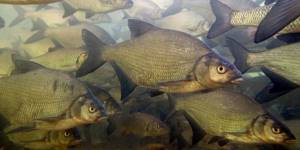
Choice of bait
To quickly attract the attention of bream, you need to fill the feeder with suitable bait. There are many recipes for such a mixture using various ingredients, so each angler can choose the most suitable method for preparing it.
Did you know? The lifespan of bream in stagnant water can reach 30 years. But in flowing waters, the age of fish rarely exceeds 10–12 years.
Any bait must contain the following components:
- coarse products (barley, peas, corn, pieces of crackers) - they prevent the mixture from being quickly washed out of the feeder, making the mass moderately viscous;
- spraying ingredients (semolina, breadcrumbs, corn flour, ground cake, mastyrka) - necessary to create turbidity that attracts fish, as well as to distribute the contents of the feeder downstream;
- flavorings (vanillin, ground garlic, anise, coriander, unrefined sunflower oil) - bream really like their smell, attracting it to the fishing spot.
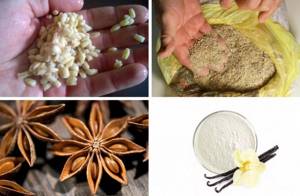
General recommendations for preparing bait for bream:
- the mixture should not be too dense or too crumbly;
- on a reservoir with a dark bottom it is recommended to use light-colored bait, and on a light bottom - a dark mixture;
- when fishing in autumn, you can add chopped earthworms or maggots to the mixture;
- for additional turbidity, you can add a little soil to the feeder;
- When using flavorings, you need to observe moderation - too strong a smell can scare away bream.
Sinker bait. Tackle element
This is a very important element of gear. A well-made feeder is the key to a good catch.
Food should be gradually washed out of the feeder in portions, which will create a trail of turbidity and large fractions, keeping the fish at the point. The intensity of the fish's bite will depend on how your feeder works. Store-bought feeders most often require modifications. They are too light and have manufacturing flaws. A couple of design modifications and you will have an excellent feeder.
The feeder should be heavy so that it falls close to the boat and is not carried several tens of meters. Usually a lead load of about half a kilogram is enough, plus porridge. But it all depends on your fishing conditions, depth and current speed.
Selecting and making a feeder is a very complex issue. There are a lot of designs and shapes, each fisherman customizes it to his own taste. They use steel mesh, nylon bags, stockings, even plastic bottles with burnt holes. You can start with a purchased steel mesh, similar to a small fish tank, modify it and make it heavier, and then, with an understanding of the specifics of fishing, you can adapt and modernize the gear to suit you.

General characteristics
Watching a video of catching fish with an “egg” device, a desire arises to make one for yourself.
Devices for catching fish “eggs” are an analogue of the “ringing” tackle. Their distinctive features are their different shapes, as well as the fastening of the sinker. They are used mainly in summer, occasionally in autumn.
They catch mainly non-predatory representatives of the fish family. The “egg” tackle functions thanks to two devices, namely a special feeder and a boat.
In this tackle, the sinker is presented in the form of two lead balls connected by wire with a mounting loop. They are often caught using “eggs” far from the shore.
How to mount leashes
One of the common problems of novice fishermen who try to fish this way is tangled leashes. There are several tricks to avoid this.
Use fairly thick fishing lines with a diameter of about 0.3 mm. It is better to use fluorocarbon leaders - this way you will reduce their tangling to a minimum.
- Firstly, fishing for large bream or ide in the fairway current is not an easy task; using thin fishing lines, there will be a lot of cliffs.
- Secondly, the thinner the line, the more easily it will get tangled.
- Thirdly, when fishing at great depths, far from the shore, in a trail of washed-out bait, the fish behaves quite boldly.
A free-floating bait in the water does not alarm the fish. When feeding in the current, the fish does not particularly “click its nose” and does not spend a long time and carefully choosing what to eat. Actively grabs food floating by before it floats out of sight.
The length of the leashes should be 20 cm; you should not make them longer - they will get tangled. And the length of the “entry” itself (the distance from the feeder to the last hook) is from 1.5 m to 3 m. The stronger the current, the longer the allowance. But for your first fishing trips, while you are just learning, I recommend not making it too long.
The video describes in as much detail as possible the manufacture of the correct equipment from an experienced “ring maker”, which will not get tangled.
Gear requirements
Rod
A fishing rod, or simply a “board”, is a powerful fiberglass spinning rod approximately one meter long.
Coil
When fishing with “eggs,” many fishermen prefer to land their prey using a reel and only do it with their hands at the final stage. In such a case, a spinning reel seems more convenient, and you can use the most budget option.
Nod
The nod should not bend too much under the weight of the load and, at the same time, it should fix the bite. Spring nods with a bright ball at the end are optimal.
fishing line
At least 50 meters of monofilament fishing line with a diameter of 0.3-0.35 mm are wound onto the reel.
Sinker
The sinker is the actual “egg” tackle, the mass of which is determined by the depth and strength of the current at the fishing site.
Leashes
When using leashes, there are different rigging options. In the simplest case, one leash with a diameter of 0.15-0.18 mm is attached to a swivel tied to the main line. Its length can vary from 0.5 to 2 meters. There can be two leashes, but then they must have different lengths. They also use a “garland”, i.e. a piece of fishing line with a diameter of 0.22-0.26 mm, to which from two to six leashes are sequentially attached.
Bait cord
Monofilament fishing line with a diameter of 1 mm is usually used as a bait cord.
Feeder
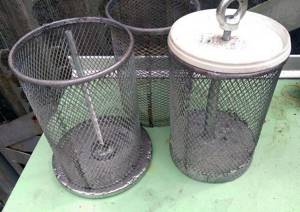
The feeder is an important element of equipment when fishing with “eggs”. There are two types of feeders: “bucket” and “bag” . A “bucket” is a cylindrical feeder made of metal mesh with holes in the walls several millimeters in diameter, with a heavy lead base and a lid on top. A “bag” is a simple bag made of nylon mesh with a mesh of the required diameter, which depends on the size of the feed particles in the bait.
Choosing a fishing rod for catching bream
A short side duck with a powerful spinning reel will make fishing easier. A nod is used as a bite alarm. It is better not to use bells, because... they constantly get in the way, you have to remove them, which takes time each time and gives the fish a chance to get away.
The main line is made thicker than the leads by 0.1-0.05 mm, about 0.4-0.5 mm is fine. The fishing line on which the ring rides and lowers the feeder is taken about 1 mm - there is no point in thinner.
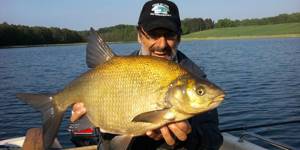
Onboard fishing rod for catching carp on a ring
Carp requires a delicate approach to the preparation of gear - fishing line, hook, side rod, everything must be both gentle and strong. A classic meter rod is recommended as a side fishing rod. A long spinning rod is not convenient in boats and can break the tackle - often wild carp suddenly surface when fishing. Wild carp can tangle the fishing line around the feeder.
For such a fishing rod, multiplier reels on a counter are suitable. A correct setting is important so that during the process of hooking and fishing the carp does not cling tightly, but pulls the line a little with its maximum effort. If the clutch is incorrectly adjusted, the carp can drag the equipment into snags, get tangled and fall away. On average, fishermen catch several trophy carp per day, weighing 8-15 kg.
Bait for catching bream and ide
When fishing using this method, you need to pay special attention to bait. The catches of two fishermen from the same place can differ radically if one uses complementary food of the wrong consistency.
Don't be afraid to overfeed the fish when fishing with a ring. It's practically impossible. The bait is constantly washed out and floats away with the current. The fish does not have time to be completely satisfied. And in general, it is almost impossible to overfeed bream and ide.

It is necessary that the bait is well washed out of the feeder and carried by the current. This is the most important principle of operation of this gear. To do this, the porridge should not be too sticky. This is achieved by washing the cereal before cooking. I add fractions that dry and prevent the porridge from sticking - cake, bread. Cake, generally very powerful in aromatics, is an excellent bait, which was used by our grandfathers.
In this case, it makes no sense to use store-bought bait as a basis. Firstly, it is quite expensive because you will need a lot of bait. Secondly, purchased bait consists of rather small fractions, which is not desirable. To interest and attract large fish, you need large fragments - peas, pearl barley and other cereals. Store-bought bait should be mixed into the porridge to add flavor, as an addition, and not as a base. I also recommend trying different aromatic additives. Choose a scent that interests the fish in your pond at this time of year and this will yield an even greater catch.
I don’t see the point in giving an exact recipe in grams. What you have at home goes into complementary food, the main thing is that the main components are present, and that the bait has the correct consistency, and this is best achieved by eye.
Main components:
- millet, cooked until half cooked, when it just begins to open, and washed before and after. So that the bait is more crumbly and does not stick together.
- pearl barley, here you can cook it tightly. Before doing this, it is recommended to soak it overnight. After cooking, rinse.
- peas are also soaked and cooked until almost fully cooked.
- hmyh, added to the finished mixture.
- bread.
- purchased bait to give a better aroma.
You can add rolled oats, but it makes the bait more sticky. Use dry kvass, breadcrumbs, add animal food - maggots, chopped worms, gammarus (smelly aquarium food, which many consider the secret ingredient). Use flavors that the fish in your pond prefer. At worst, use unrefined sunflower oil!
Competent bait is like a chef’s dish; understanding comes with experience and skill!
This video shows ring fishing and also gives the correct bait recipe.
And here is another good video on how to make a tackle ring with your own hands. Enjoy watching.
Preparation of bait
Any bait, including home-made bait, must have the desired structure, and not just contain several components. Fish food should be as follows:
- The bait consists of the main mass, which is used to create volume and attract fish. Most often, the bait is based on cheap components. However, they must be edible for fish. The most common are compound feed, halva and pearl barley.
- Feed elements that can hold the fish in the fishing area must be added to the mass. If the fish does not find attractive food, it will quickly leave the area in search of food. Ingredients of animal and plant origin are used as feed elements, such as worms, bloodworms, maggots, millet and rolled oats.
- Additives should be used in bait, such as flavorings and taste enhancers. A special role is played by aromatic additives, which can attract fish from a long distance. Sunflower, anise or hemp oil, as well as fried seeds and garlic juice can be used as flavorings.
If fishing takes place in a small reservoir where the density of fish is high, these requirements can be neglected. In such conditions, you can use simple porridge. But if the reservoir is large and the density of fish is small, then the use of porridge is ineffective. In such a situation, you cannot do without special additives.
Read: Bait for the feeder
Read: Secrets of feeding crucian carp
Read: Preparing bait for carp
Nozzle
Here the choice depends on the specific body of water and time of year. You need to have several bait options with you so that while fishing you can determine the most catchy one and make a “sandwich”. Usually these are worms - dung worms (California), crawlers and maggots. Foam balls are like the most unpretentious attachment. Less often dough. Dough is generally an inconvenient thing for this method of fishing, because... fishing always takes place in a moderate current, it is washed away and does not hold well on the hook. And although this is a very good attachment in summer, if you do not know how to make very tight, dense dough that will stay on the hook for a long time, it is better to abandon this idea. It's great if you can get a lot of cockchafer larvae - this is a good bonus for trophy ulcer and bream!
The bait selection tactics are very simple. Usually 3 hooks are used. On the first one, which is closest to the feeder, foam is placed; it will work well here too in the cloud of turbidity from complementary feeding. Next is the worm, maggot. We fix what gets the most bites and equip the rest of the hooks with this.

If you follow the simple rules for the correct installation of gear, learn how to make proper bait and find a place where carp fish stay, your catch will always be guaranteed!
Please share the intricacies of fishing in the comments if you have mastered this gear perfectly. Thank you!
NHNCH.
Best attachments
If you are fishing with eggs in the summer, you can use a variety of animal and plant baits. Among the plants, the most common are the following:
- Steamed peas.
- Canned corn.
- Pasta. Horns and stars are best suited for fishing. The horns can be inserted through the hole along the entire length of the hook, and the stars are strung in groups of 5. In order for the pasta to stay firmly on the hook, it does not need to be fully cooked.
- Fishing dough is prepared using water or eggs from wheat or oatmeal with the addition of other types. It is recommended to add ground nuts and seeds to the dough. Adding cotton wool to the dough makes the attachment more stable.
- Sunflower cake. It is mainly used as an ingredient in bait, but can also be used as bait. It is best to use the cake in warm water.
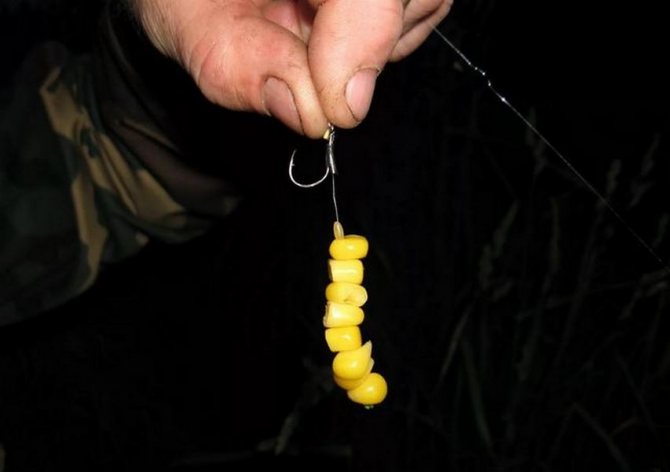
Popular animal baits include:
- Worm. This is the best bait for fishing. Almost all types of fish that live in Russia bite on the worm.
- Maggot. It is convenient as bait and can be purchased at any specialized fishing store.
- Bloodworm. It is rarely used in summer, but in winter it is one of the best baits.
Read: Seven ways to attach bloodworms to a jig in winter
